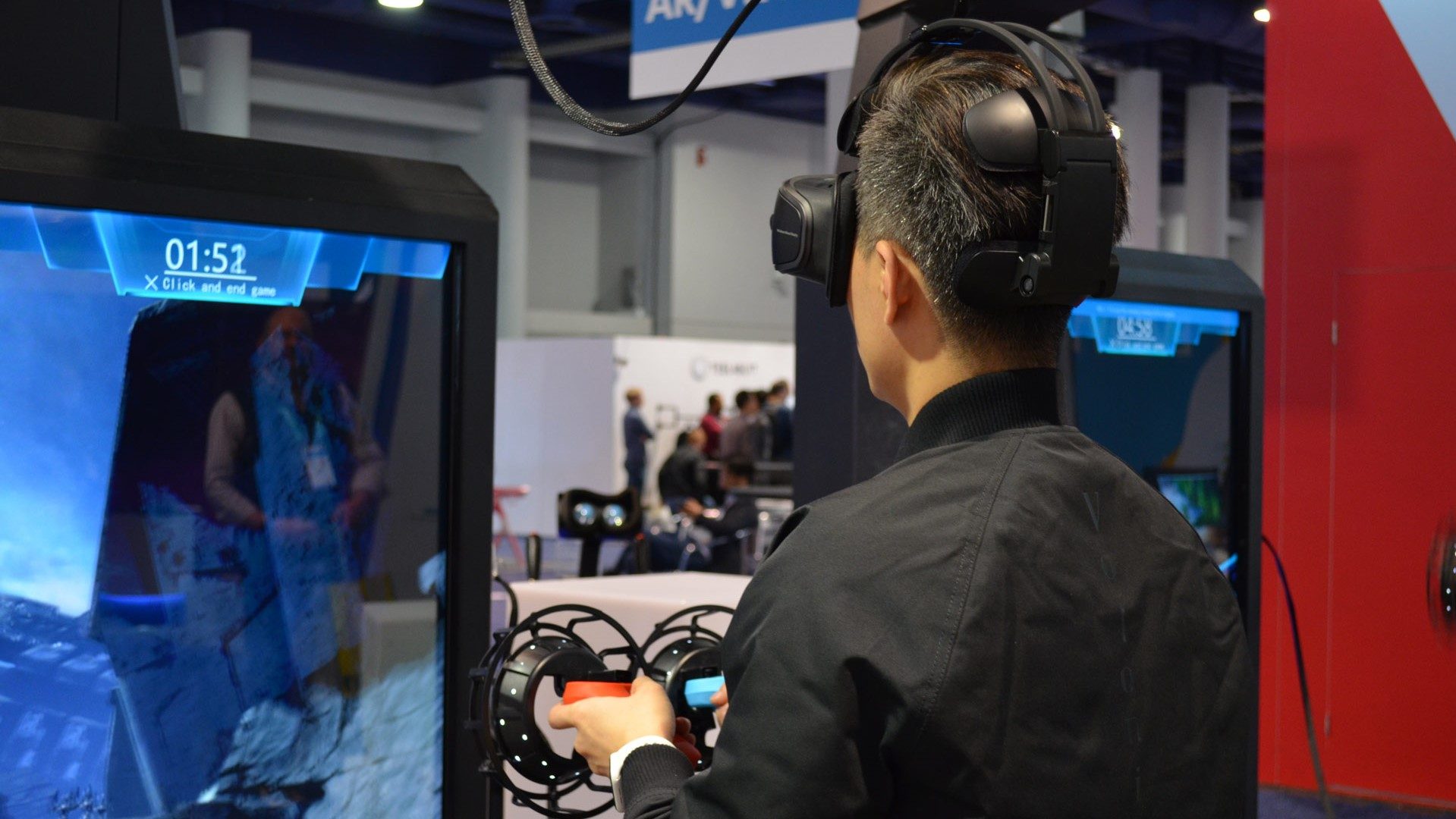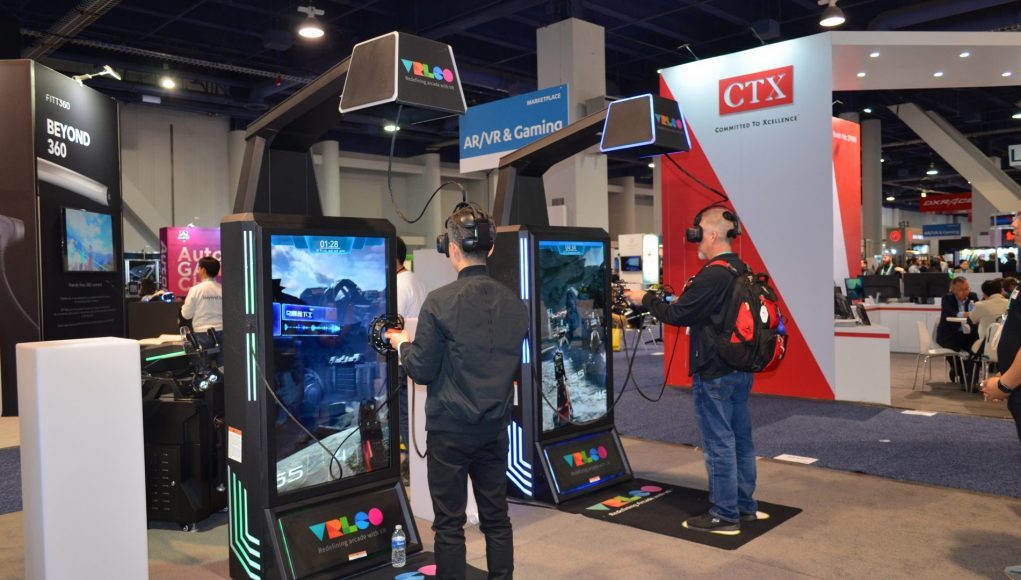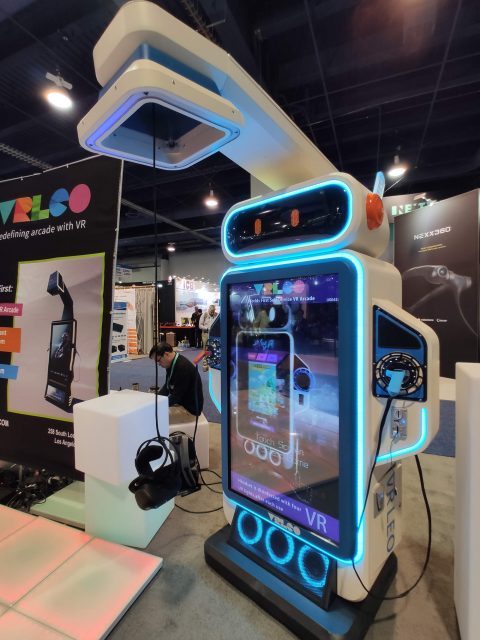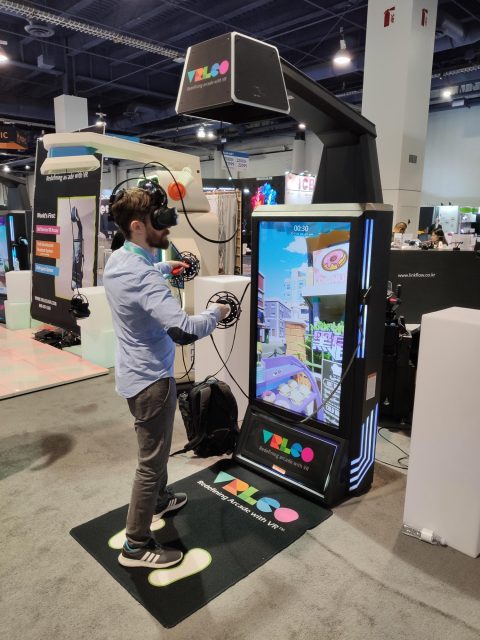VRLEO is a company based in Los Angles and Shanghai that’s looking to shake up the out-of-home VR scene with its arcade kiosks. At CES this week we got a chance to go hands on with the company’s flagship product, the LEO cabinet system, which includes a few novel technologies that aim to give it an edge over the competition.
These sorts of VR kiosk systems aren’t exactly new in principle; we’ve seen VR arcade cabinets as early as 2018 promising ‘fully-automated’ VR experiences, be it pop-ups in airports worldwide or dedicated Beat Saber machines. The problem is that these units are rarely truly self-serviced machines—average users who’ve never used VR before simply don’t know what to expect, and the onboarding process and cleaning is usually done by a human attendant. Granted, a single attendant can wrangle a number of devices, but a true self-service VR machine that everyone intuitively understands (and can’t inadvertently destroy) is still on the horizon.

To some extent that also goes for LEO too despite it being marketed as an entirely self-service machine. Its clear however that the company is thinking hard about how to offer a system that you might leave unattended to the mercy of your bog standard mall rat, and it’s approaching that with some interesting techniques we haven’t seen in similar kiosks. Currently operating machines in China, Vietnam, and the US, the company says that the kiosk is already present in arcades, malls and even a subway station in Shanghai. Although that sounds pretty strange from a Western perspective, Shanghai’s subway system has gads of single-serving karaoke machines and other such confangled devices that may otherwise be summarily abused in somewhere like New York, Washington DC, or Philadelphia.
Based on a Windows VR headset from Lenovo, the system has a novel retraction system that brings the headset up to an overhead housing stocked with powerful UV lights, something founder and CEO Patty Lui says takes under 30 seconds to sterilize the headset entirely. A sort of clamping overhead headstrap is a clever one-size-fits-all solution, something which was not only born out of convenience of not having to tighten a strap system, but also to avoid messing up a user’s finely quaffed hair. That said, I wouldn’t want to use it for longer sessions as it doesn’t clamp down nearly tight enough for a truly secure fit.
Another unique innovation: the sides of the cabinet are actually magnetic, something Lui says still needs to be tweaked so users can intuit where to put the return the controllers after the session is over. A custom controller housing contains magnets for storage and a large cage and rubber grip that protects it from the inevitable wear and tear of a public device.
You’ll notice in the photo below that the controller’s thumbstick is deactivated with a thick plastic cover, reducing it to its trigger, thumbpad, grip buttons and home button. Neither of the games I played used anything but the trigger, which made it feel more like a glorified lightgun—a sensible move to make VR sessions quick and easy for people who may be otherwise overwhelmed.
The company provides five arcade-style games which were developed in-house, although VRLEO has a scheme whereby third-party developers can sell slimmed-down arcade versions of popular games such as Beat Saber, which vendors can buy for a one-time licensing fee. A cloud-based content management system can be controlled via smartphone over the Internet, which includes full hardware diagnostics, remote game library management, and full up to date specs on how much a vendor is earning.
A large touchscreen lets you select games, which also provides a brief description and a few quick on-screen instructions before you start to help you figure out how to operate the whole thing. That’s a lot of kit, although it will cost you. VRLEO is selling its kiosk for $28,800 for a single unit, and going down to $18,000 at its cheapest when purchased in a bulk of 40.
Although LEO had a few hiccups, like having to blindly replace the controllers by myself when the game was finished, my reservations about self-sufficiency inevitably lie not in LEO, but rather in the lowest common denominator of its prospective user. Having seen any Nintendo Switch demo station at Walmart ought to give anyone pause about what the true fate of an unattended VR system: scratched lenses, greasy facial interfaces, twisted and frayed cables. Surely such a system would need someone to make sure it’s in good working order on a regular basis. It raises the question: will there ever be a truly public VR kiosk like you might see in those nearly indestructible arcade lightgun games of years past, many of which still function today thanks to their purpose-built robustness? I really can’t say, but it seems VRLEO is trying its hardest to get very close.










